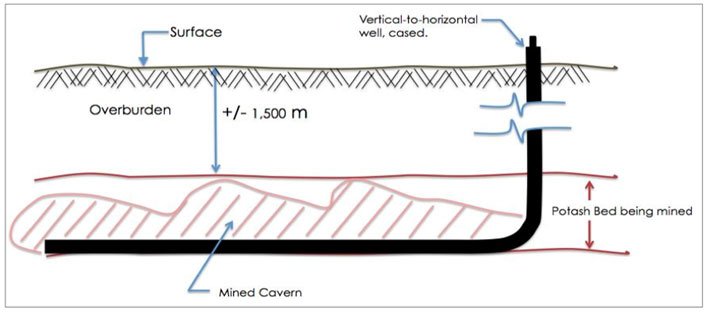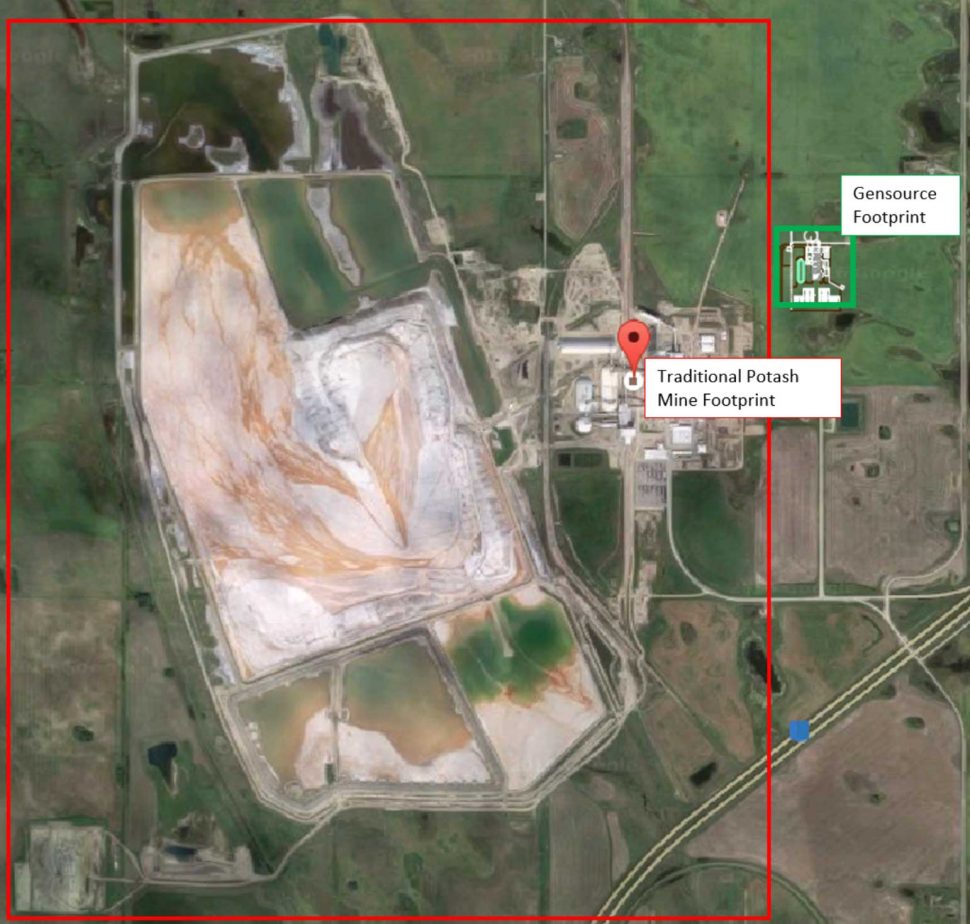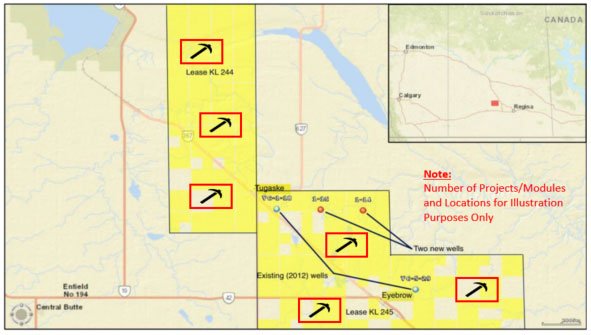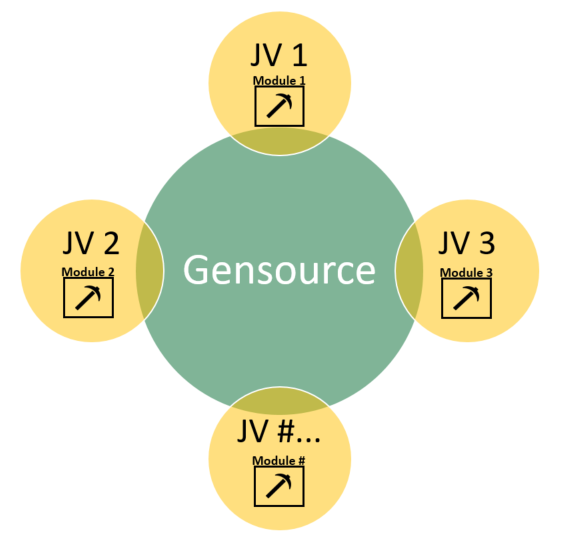Mining Innovation
Selective Solution Mining (“Selective Dissolution”)
Gensource is developing innovative approaches using proven mining techniques to:
- Extract up to 10 times the resource from the same area, compared to conventional mining
- Be a much more responsible steward of the province’s resource
- Leave no salt tailings on surface
- Reduced environmental concern and much lower handling costs
- Dramatically reduce fresh water consumption
- Environmental advantage and lower cost
- Dramatically reduce energy consumption per tonne of product
- Lower cost and carbon footprint
How it works:
A nearly saturated NaCl (salt) brine, utilizing brackish formation water, is injected into the horizontal caverns where only KCl (potash) is dissolved.
The KCl-rich brine is pumped to the process plant, where a cooling crystallization process removes the KCl, resulting in solid crystals of potassium nutrient (KCl). This includes a state-of-the-art energy-efficient process, resulting in lower operating costs, which is protected by an approved US Patent.
Remaining NaCl brine is returned to the horizontal caverns, where the cycle is repeated (a “closed-loop” process).
Using innovative drilling techniques, Gensource’s cavern layout optimizes the number of caverns that can be placed on each section of mineral rights, and are arranged so that multiple wells can be directionally drilled from one location on surface.

Horizontal Cavern for Selective Dissolution (Cross-Section)
Gensource is not inventing selective dissolution, and the concept has been discussed as being an optimal approach since 1967. Selective dissolution of potash has been successfully deployed at Intrepid Potash’s Cane Creek Mine (Moab, UT) since 2002. Therefore, Gensource is not reinventing the wheel; we are just perfecting it for Saskatchewan.
The horizontal drilling and selective solution mining method is ideal for Saskatchewan, as Saskatchewan is blessed with a wide-spread, flat lying, and well-defined prairie evaporite (potash) formation.

Horizontal Well Pattern (Isometric of 3 caverns)
Key benefits of selective dissolution
More environmentally friendly:
One of the key benefits of the selective solution mining process is that it is much friendlier on the environment, from both a construction and operations perspective.
Traditional mines have a huge environmental footprint, which includes:
- Massive salt tailings stored on surface for an indefinite period
- Brine/Slimes/Cooling Ponds, with risk of leaks
- Large fresh water consumption
- Large demand on utilities
Whereby a Gensource project will have a small footprint, due to:
- No salt tailings or brine structures (i.e. ponds) on surface
- Brackish groundwater compatible for mining
- Self-generating power (Natural Gas Boiler/Steam Turbine Generator)
- Cleaner than purchasing grid power, which is primarily coal-fired (net GHG reduction)
- Layout can accommodate doubling of capacity, without a footprint increase
- “Right-sized” for rural Saskatchewan
- Smaller consumption of utilities, and lower impact on community infrastructure

Source: Google Earth, modified by Gensource
Scalable and repeatable:
The selective solution mining and enhanced recovery process enable Gensource to provide an economical, small-scale project, which is scalable and repeatable.
Each one of Gensource’s projects (referred to as “modules”) is capable of 250,000 tonnes of annual potash production, has > 40-year life of reserves (centuries of resource), and will operate in the lowest quartile of costs as compared to all potash operations in the world.

Each module is a single unit, economic on it’s own, and is designed to produce 250,000 tonnes per year of salable potash. Each module can also be scaled-up, to produce more annual output, and decrease the annual operating costs. Gensource’s Vanguard Area can support several projects or modules (i.e. Vanguard One, Two, Three, Etc.)

Increased synergy across multiple modules:
- Gensource will be an equity partner in each Joint Venture (JV), creating synergies amongst all of the independent modules
- Multiple modules can share common utilities, infrastructure, etc., which will lead to a reduced capital cost for each module (Lower CAPEX $/tonne)
- Multiple modules can be operated by shared personnel, leading to lower operating costs (Lower OPEX $/tonne)
- There will be lower transportation and logistics costs for the product shipping, by leveraging a common network
- By leveraging synergies created by Gensource owning and operating each module, each JV and module has an even more attractive ROI

Cost effective & efficient:
Selective dissolution allows for a more cost effective project and operations in comparison to the traditional mining methods.

[emaillocker]Download PDF[/emaillocker]